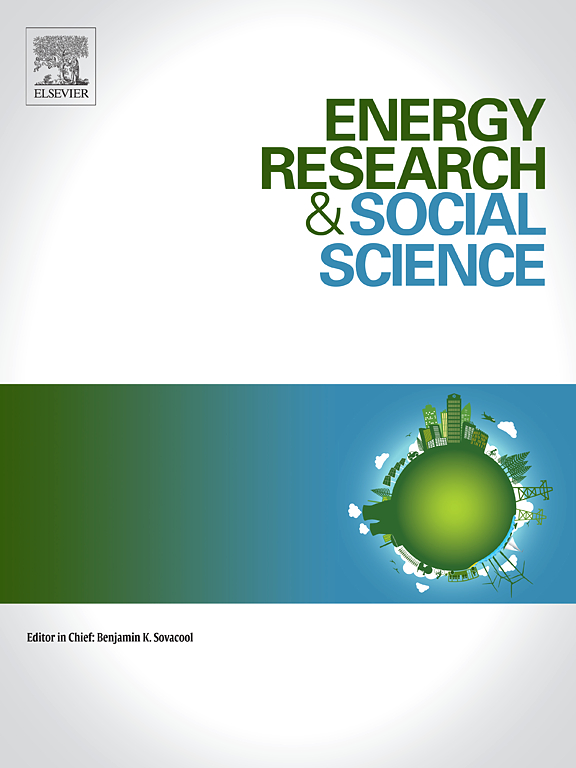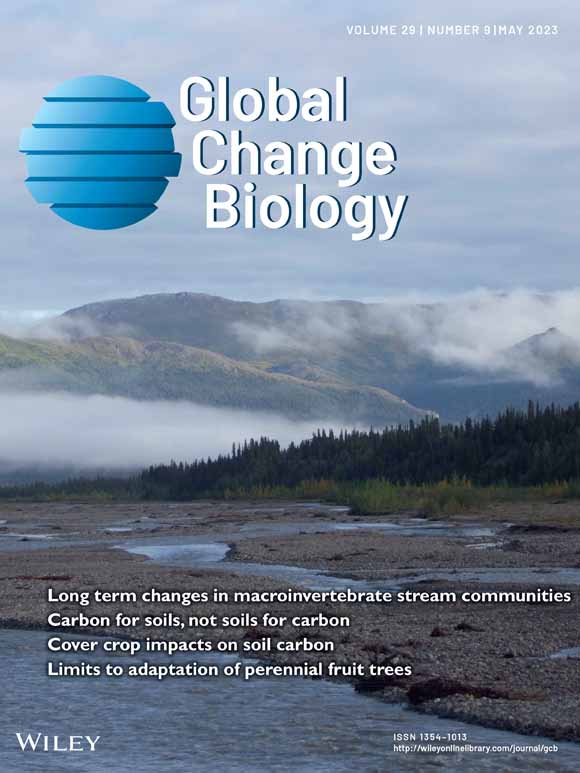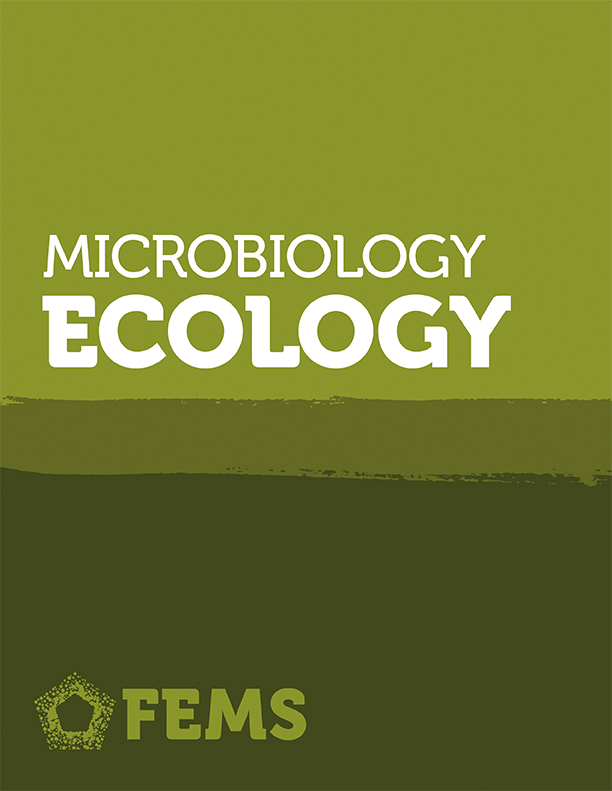Please find all scientific publications of IGB under > scientific publications
For more detailed information please refer to our > library catalogue
21 - 30 of 145 items
- Department:(Dept. 3) Plankton and Microbial Ecology
May 2025
Freshwater Biology. - 70(2025)5, Art. fwb.70023
Using Long-Term Ecological Datasets to Unravel the Impacts of Short-Term Meteorological Disturbances on Phytoplankton Communities
Viet Tran-Khac; Jonathan P. Doubek; Vijay Patil; Jason D. Stockwell; Rita Adrian; Chun-Wei Chang; Gaël Dur; Aleksandra Lewandowska; James A. Rusak; Nico Salmaso; Dietmar Straile; Stephen J. Thackeray; Patrick Venail; Ruchi Bhattacharya; Jennifer Brentrup; Rosalie Bruel; Heidrun Feuchtmayr; Mark O. Gessner; Hans-Peter Grossart; Bastiaan W. Ibelings; Stéphan Jacquet; Sally MacIntyre; Shin-Ichiro S. Matsuzaki; Emily Nodine; Peeter Nõges; Lars Rudstam; Frédéric Soulignac; Piet Verburg; Petr Znachor; Tamar Zohary; Orlane Anneville
May 2025
Water Research. - 283(2025), Art. 123764
Phytoplankton abundance and methane emissions are minimally impacted by environmentally-relevant glyphosate concentrations in small-scale outdoor mesocosms
Christopher F. Frazier; Ted D. Harris; Tonya DelSontro; Hans-Peter Grossart; Belinda S.M. Sturm; Jalynn M. Murry; Andrew Ising

May 2025
Ecotoxicology and Environmental Safety. - 297(2025), Art. 118262
Community assembly characteristics of abundant and rare bacterial taxa in water, sediment and riparian soil of Wujiang river, China
Yang Yang; Chen Chen; Hans-Peter Grossart; Yingliang Liu
May 2025
FEMS Microbiology Ecology. - 101(2025)6, Art. fiaf050
Detectable land use impact on methanotrophs and methanogens in kettle hole sediments but not on net methane production potentials
Danica Kynast; Florian Reverey; Lars Ganzert; Hans-Peter Grossart; Gunnar Lischeid; Steffen Kolb

April 2025
Energy Research & Social Science. - 125(2025), Art. 104089
Minimizing trade-offs and maximizing synergies for a just bioeconomy transition
Anette Ruml; Cheng Chen; Christoph Kubitza; Maria Kernecker; Hans-Peter Grossart; Mathias Hoffmann; Maire Holz; Ludger A. Wessjohann; Hermann Lotze-Campen; Maren Dubbert
April 2025
Limnology and Oceanography. - XX(2025)XX, XX-XX
Trophic strategies of freshwater nanoflagellates under variable run-off scenarios
Katerina Symiakaki; Stella A. Berger; Gabriela Agreda-Lopez; Bence Buttyan; Bence Gergacz; Silke Langenheder; Jens C. Nejstgaard
April 2025
Frontiers in Environmental Science. - 13(2025), Art. 1559941
Per- and polyfluoroalkyl substances (PFAS) in the cryosphere – occurrence, organismic accumulation, ecotoxicological impacts, transformation, and management strategies
Ashani Arulananthan; Oddur Þór Vilhelmsson; Ulf Karsten; Hans-Peter Grossart; Auður Sigurbjörnsdóttir; Óttar Rolfsson; Hanna Joerss; Bettina Scholz

April 2025
Global Change Biology. - 31(2025)4, Art. e70171
Positive Feedback on Climate Warming by Stream Microbial Decomposers Indicated by a Global Space-For-Time Substitution Study
Javier Pérez; Luz Boyero; Richard G. Pearson; Mark O. Gessner; Alan Tonin; Naiara López-Rojo; Juan Rubio-Ríos; Francisco Correa-Araneda; Alberto Alonso; Aydeé Cornejo; Ricardo J. Albariño; Sankarappan Anbalagan; Leon A. Barmuta; Andrew J. Boulton; Francis J. Burdon; Adriano Caliman; Marcos Callisto; Ian C. Campbell; Bradley J. Cardinale; Luciana S. Carneiro; J. Jesús Casas; Ana M. Chará-Serna; Eric Chauvet; Checo Colón-Gaud; Aaron M. Davis; Elvira de Eyto; Monika Degebrodt; María E. Díaz; Michael M. Douglas; Andrea C. Encalada; Ricardo Figueroa; Alexander S. Flecker; Tadeusz Fleituch; André Frainer; Erica A. García; Gabriela García; Pavel E. García; Paul S. Giller; Jesús E. Gómez; Jose F. Gonçalves Jr.; Manuel A. S. Graça; Robert O. Hall Jr.; Neusa Hamada; Luiz U. Hepp; Cang Hui; Daichi Imazawa; Tomoya Iwata; Edson S. A. Junior; Andrea Landeira-Dabarca; María Leal; Kaisa Lehosmaa; Charles M. M'Erimba; Richard Marchant; Renato T. Martins; Frank O. Masese; Megan Maul; Brendan G. McKie; Adriana O. Medeiros; Jen A. Middleton; Timo Muotka; Junjiro N. Negishi; Alonso Ramírez; Renan S. Rezende; John S. Richardson; José Rincón; Claudia Serrano; Angela R. Shaffer; Fran Sheldon; Christopher M. Swan; Nathalie S. D. Tenkiano; Scott D. Tiegs; Janine R. Tolod; Michael Vernasky; Elizabeth W. Wanderi; Anne Watson; Catherine M. Yule
April 2025
Oikos. - 2025(2025)6, Art. e11029
Longer durability of host–parasite interaction increases host density
Patch Thongthaisong; Minoru Kasada; Hans-Peter Grossart; Sabine Wollrab

March 2025
Science. - 387(2025)6739, 1181-1186
Environmental effects of the Kakhovka Dam destruction by warfare in Ukraine
O. Shumilova; A. Sukhodolov; N. Osadcha; A. Oreshchenko; G. Constantinescu; S. Afanasyev; M. Koken; V. Osadchyi; B. Rhoads; K. Tockner; M. T. Monaghan; B. Schröder; J. Nabyvanets; C. Wolter; O. Lietytska; J. van de Koppel; N. Magas; S. C. Jähnig; V. Lakisova; G. Trokhymenko; M. Venohr; V. Komorin; S. Stepanenko; V. Khilchevskyi; S. Domisch; M. Blettler; P. Gleick; L. De Meester; H.-P. Grossart






